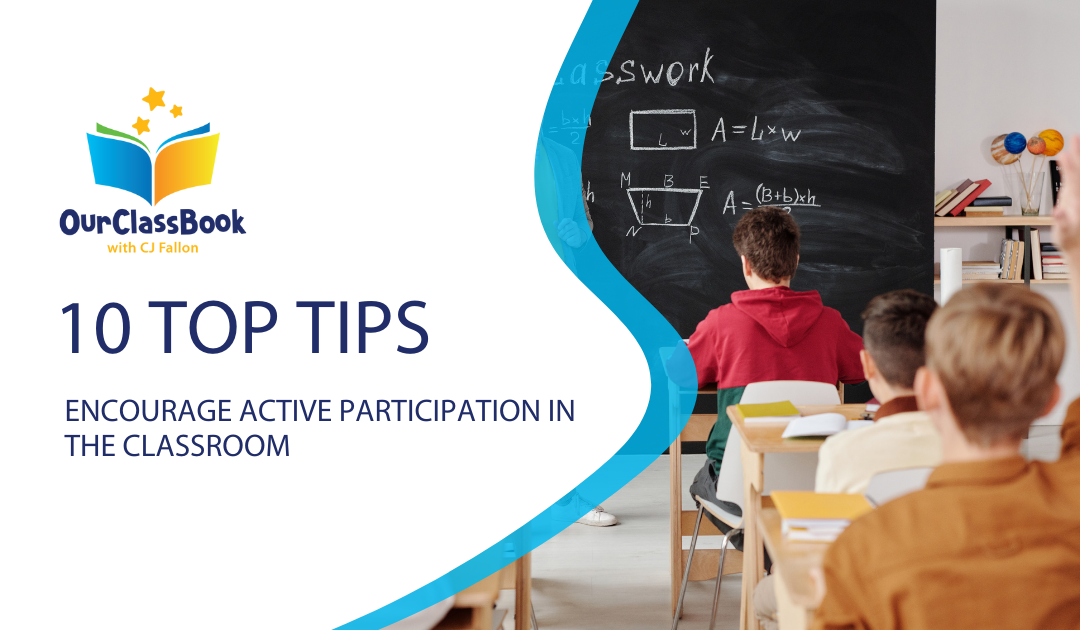How to encourage active participation in the classroom? Every child deserves to be heard, but ensuring that happens can be a challenge. The eager student who raises their hand after every question may discourage other students’ input, while the quiet student at the back may have a viewpoint that others haven’t considered but is too anxious to share it. When it comes to balancing student dynamics, it can be difficult to find opportunities for each student to express their thoughts and ideas.
Here we have compiled a list of our ten top tips to help you drive active participation in the classroom and encourage all students to participate.
#1: Determine why participation is low
The first step to solving a problem is discovering why it is occurring in the first place. There may be recurring answers from your students as to why they feel reluctant to participate. This may be; “I don’t know the answer”, “I hate being wrong”, “someone else knows a better answer” or “I wasn’t prepared”. In order to get to the bottom of the problem at hand, talk to students one-to-one in a supporting manner, and gauge their perspective on why they are reluctant to participate in class. Once the answers are determined a plan can be made from there.
#2: Show students their fears are unfounded
If within your classroom you notice the students’ anxiousness stems from a fear of failing, it is important to show them that their fears are unnecessary. Show your students that it is okay to make mistakes by demonstrating minor errors during class time. For example, by giving the wrong fact or misspelling a word and then acknowledging the “mistake,” modelling how to resolve the situation. This will help students understand that making a mistake is natural and all part of the learning process.
#3: Use the jigsaw strategy
The jigsaw strategy is a fantastic method of encouraging active participation in the classroom as it keeps students engaged on the topic whilst also acting as a fun learning technique. Allow groups of students to become “experts” on a particular portion of knowledge when working on a large amount of content, and then have them teach the content to the rest of the class. This allows students to collaborate and breaks down challenging material into smaller, more manageable chunks. The smaller groups make children feel more comfortable sharing their knowledge as they don’t feel as much pressure when contributing.
#4: Give students a task during your lessons
Give students a keyword to listen out for throughout the lesson – you can even tie it to a movement or chant. For example, you can instruct pupils to chant the formula for area of a specific shape each time you mention area during a lesson on area and perimeter. This repetition not only improves memory, but it also keeps pupils engaged throughout the class, encouraging participation.
#5: Utilise asynchronous participation
Shy children, introverts and those who need extra time to process information before producing a response aren’t usually taken into consideration under traditional participation tactics. Teachers can address this problem by differentiating and personalising participation so that students of all backgrounds and temperaments feel comfortable sharing their ideas.
Waiting 15 to 20 seconds after asking a question before having anyone answer can help in the classroom. Another approach you may consider is to provide students with opportunities to contribute that don’t require them to speak aloud. Digital innovation has ushered in a plethora of collaborative tools that allow students to participate in ways that reduce the stress of social interaction and public speaking. Try using a Google Doc, Google Classroom, Padlet, or NearPod to allow students to contribute their opinions and ask questions.
#6: Offer praise when they do share
One of the easiest ways to encourage your students to participate in class is to offer praise when they do share their work, answer a question, etc. Many experts suggest that children thrive off of positive reinforcement and cheerful messages such as “excellent job!”, or a simple gesture (such as a thumbs up). This will generate good feelings within the child whilst also encouraging them to attempt sharing again and again.
#7: Create a participation chart
Setting objectives is a crucial skill to instil in your pupils. Set a participation target for your students and keep track of their progress with a chart. You can put a sticker on the chart every time a student contributes in class. If you’re having trouble getting students to participate, it might be a good idea to give them a small prize.
#8: Choose projects and activities that excite your students
Choosing projects and lessons that your kids will enjoy is a great way to encourage them to participate in class.
Role-playing or conducting interviews are great examples of discussion-based activities that might help to increase engagement. Consider activities that involve class, group, and individual participation, such as developing and publishing a classbook. You can choose the book’s theme together as a class. Students will create their own classbook pages in their own time, then collaborate in groups to edit and revise them.
#9: Let your students have a say in how they learn
When students believe their ideas are insignificant, they tune out. Students will feel more invested in the classes if they have a say in how they learn and what type of activities they perform. Allowing your students to choose how they express their knowledge and providing them with a variety of topics to explore will boost class involvement. Make a list of what activities have worked effectively in the past and adapt them to other lesson ideas.
#10: Use a fairness cup to keep students thinking
A good way to ensure each student is participating in class regularly is to implement a fairness cup in the classroom. To do this, write each student’s name on a lollipop stick and put the sticks in a cup. To keep students on their toes, pull a random stick to choose someone to speak or answer a question. The more you can manage your classroom to be a supportive environment where students are encouraged, the easier it will be to use your fairness cup regularly.
Implementing these ten tips in your classroom will help encourage all students to feel comfortable participating and showcasing their ideas in your class. At OurClassBook, our goal is to help build students’ self belief, teamwork skills, and allow them to bring their creative side to light. If you’re looking for new, innovative ideas to make learning more fun, why not order our easy-to-use classbook publishing kit?

